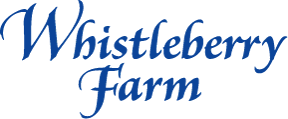Our Free Range Methods
Our birds, all of them, are started in separate small “batches” in a
brooder as hatchery chicks, with the exception of the breeds born here.
As soon as we can move them away from a heat lamp and outside, we do so.
That may be at a few days of age in the case of a gosling in warm weather
or a few weeks in the case of chicks in a cool spring. They go
first to a moveable shed, and get only short trips out on pasture until the
weather permits them to be outside all day. Then, they are
pastured all the time, although we maintain a shelter available to them.
The type and extent of shelter varies from one species of
poultry to another, and we keep trying new ideas. The degree of
confinement varies as well.
Sometimes we can get by with an electrified net that permits the birds to
go in and out at will during the day, but deters predators as long as the
birds return to a location inside the fence at night. They
generally do that.
Introducing the birds to range by increments permits us to get them
outside as fast as possible and onto what we all think of as range at the
earliest possible age. The notion of a bird scratching in the
soil and free to move about at will in a green pasture, is not the norm
in many “free-range” operations. It is in ours. Our
birds are not in buildings with “access” to a pasture. They are
in a pasture with access to a shelter.
One caveat is that in any given year, if I have hawk or owl problems that
are causing too many losses, I resort to confining the chickens to open-air
pens that I move around the pasture every day in an effort to approximate
free-range. The ducks and geese are given free-range when they
are old enough, but when predation picks up, I resort to “day-range” where
the birds are out during the day but shut in at night.
We start all our poultry on feed mixes designed specifically for hatchlings with the dietary needs of that species, but with no drugs or medication added. We include no antibiotics or other drugs in our feed. After the period of “baby food" appropriate to each species, all the poultry is moved to a custom-mixed feed without animal byproducts and without medication or growth stimulants. We do have the chicks vaccinated for potential disease at the hatchery. We choose this practice because it helps ensure the health of our flock. This vaccination of chicks is consistent with the standards required for poultry production that is certified organic.
